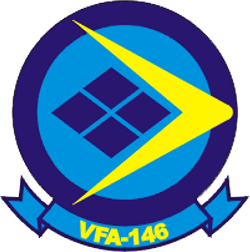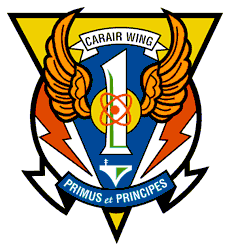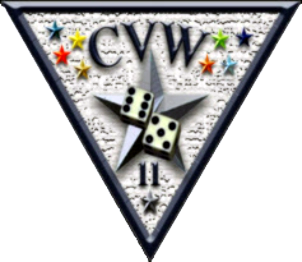Coordinates: 11°00′00″N110°00′00″E / 11.00000°N 110.00000°E

A geographic coordinate system is a coordinate system that enables every location on Earth to be specified by a set of numbers, letters or symbols. The coordinates are often chosen such that one of the numbers represents a vertical position and two or three of the numbers represent a horizontal position; alternatively, a geographic position may be expressed in a combined three-dimensional Cartesian vector. A common choice of coordinates is latitude, longitude and elevation. To specify a location on a plane requires a map projection.

Dixie Station was a geographic position during the Vietnam War in the South China Sea off the Mekong Delta from which United States Navy aircraft carriers launched strikes providing close air support for American and Army of the Republic of Vietnam (ARVN) ground troops in South Vietnam. [1] It was located about 130 km due southeast of Cam Ranh Bay, at 11° N and 110° E [2] in 600 m (2000 ft) of water.

The Vietnam War, also known as the Second Indochina War, and in Vietnam as the Resistance War Against America or simply the American War, was an undeclared war in Vietnam, Laos, and Cambodia from 1 November 1955 to the fall of Saigon on 30 April 1975. It was the second of the Indochina Wars and was officially fought between North Vietnam and South Vietnam. North Vietnam was supported by the Soviet Union, China, and other communist allies; South Vietnam was supported by the United States, South Korea, the Philippines, Australia, Thailand and other anti-communist allies. The war is considered a Cold War-era proxy war from some US perspectives. It lasted some 19 years with direct U.S. involvement ending in 1973 following the Paris Peace Accords, and included the Laotian Civil War and the Cambodian Civil War, resulting in all three countries becoming communist states in 1975.
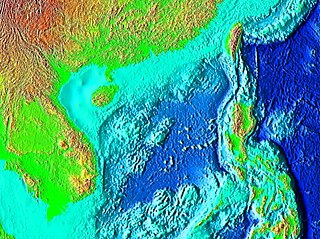
The South China Sea is a marginal sea that is part of the Pacific Ocean, encompassing an area from the Karimata and Malacca Straits to the Strait of Taiwan of around 3,500,000 square kilometres (1,400,000 sq mi). The sea carries tremendous strategic importance; one-third of the world's shipping passes through it, carrying over $3 trillion in trade each year, it contains lucrative fisheries, which are crucial for the food security of millions in Southeast Asia. Huge oil and gas reserves are believed to lie beneath its seabed.
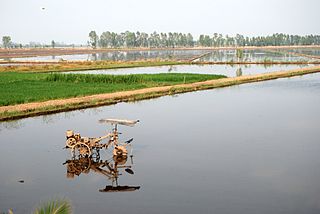
The Mekong Delta, also known as the Western Region or the South-western region is the region in southwestern Vietnam where the Mekong River approaches and empties into the sea through a network of distributaries. The Mekong delta region encompasses a large portion of southwestern Vietnam of over 40,500 square kilometres (15,600 sq mi). The size of the area covered by water depends on the season. The region comprises 12 provinces: Long An, Đồng Tháp, Tiền Giang, An Giang, Bến Tre, Vĩnh Long, Trà Vinh, Hậu Giang, Kiên Giang, Sóc Trăng, Bạc Liêu, and Cà Mau, along with the province-level municipality of Cần Thơ.
Dixie Station was established on 15 May 1965 as a single-carrier counterpart to the multi-carrier Yankee Station, which was located further north near the mouth of the Gulf of Tonkin and was responsible for strikes on North Vietnamese targets. Targets for Yankee Station strikes were personally selected (sometimes months in advance) by President Lyndon Johnson and Secretary of Defense, Robert McNamara, resulting in notoriously restrictive rules of engagement. In contrast, Dixie Station missions were carried out in response to requests for close air support by friendly ground forces engaging enemy guerrillas in South Vietnam. The strike forces were usually vectored on to their target in real time by a ground-based forward air controller.

Yankee Station was a fixed coordinate off the coast of Vietnam where U.S. Navy aircraft carriers and support ships loitered in open waters over a nine-year period during the Vietnam War. The location was used primarily by aircraft carriers of Task Force 77 to launch strikes over North Vietnam. While the coordinate's official designation was "Point Yankee", it was universally referred to as Yankee Station. Carriers conducting air operations at Yankee Station were said to be "on the line" and statistical summaries were based on days on the line. Yankee Station was initially located at 16° 00′ N, 110° 00′ E, however with an massive increase in operations over North Vietnam in 1966 the station was moved about 145 miles northwest to 17° 30′ N, 108° 30′ E, placing it about 90 miles from the North Vietnamese shore.

The Gulf of Tonkin is a body of water located off the coast of northern Vietnam and southern China. It is a northern arm of the South China Sea. The Gulf is defined in the west by the northern coastline of Vietnam, in the north by China's Guangxi province, and to the east by China's Leizhou Peninsula and Hainan Island.

North Vietnam, officially the Democratic Republic of Vietnam (DRV), was a country in Southeast Asia from 1954 to 1975.
The name "Dixie" was chosen to match that of the phonetic-alphabet-designated "Yankee," resulting in a pun relating to the traditional slang terms for the Northern United States and Southern United States, with Yankee bombing the North, and Dixie the South.

Dixie is a nickname for the Southern United States, especially those states that composed the Confederate States of America. The term originally referred simply to the states south of the Mason–Dixon line, but now is more of a cultural reference, referring to parts of the United States that "feel" southern.

The NATO phonetic alphabet, officially denoted as the International Radiotelephony Spelling Alphabet, and also commonly known as the ICAO phonetic alphabet, and in a variation also known officially as the ITU phonetic alphabet and figure code, is the most widely used radiotelephone spelling alphabet. Although often called "phonetic alphabets", spelling alphabets are unrelated to phonetic transcription systems such as the International Phonetic Alphabet. Instead, the International Civil Aviation Organization (ICAO) alphabet assigned codewords acrophonically to the letters of the English alphabet, so that critical combinations of letters and numbers are most likely to be pronounced and understood by those who exchange voice messages by radio or telephone, regardless of language differences or the quality of the communication channel.

The Northern United States, commonly referred to as the American North or simply the North, can be a geographic or historical term and definition.
Aircraft carriers continued rotating on station at Dixie flying in support of friendly forces until 3 August 1966, when enough land-based aircraft had become available to support operations in the area that aircraft carrier support no longer was needed. [3] Yankee Station, in contrast, remained in use until August 1973.










